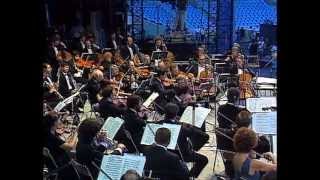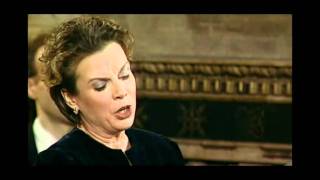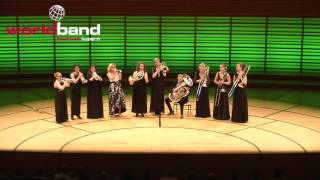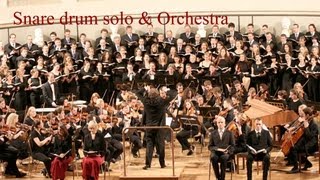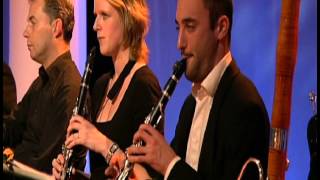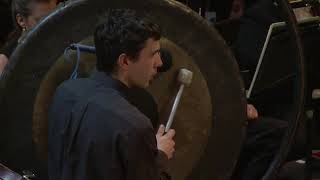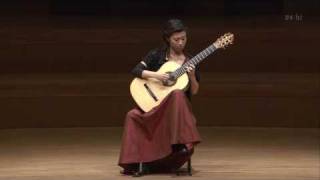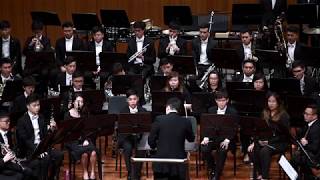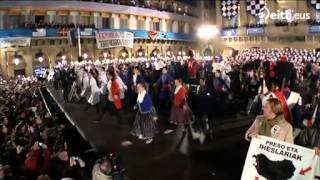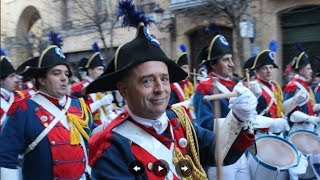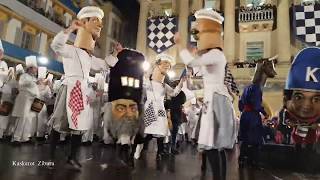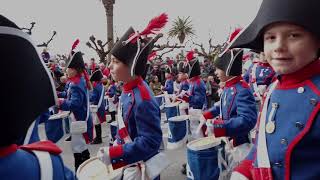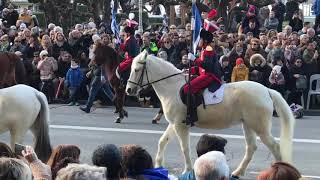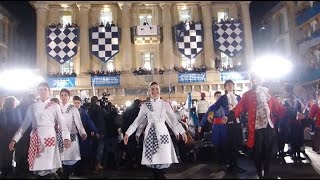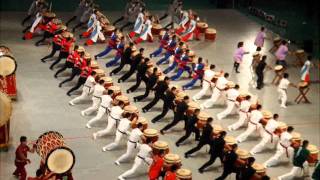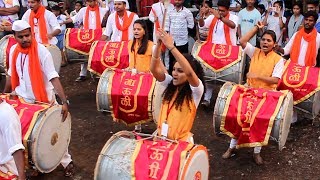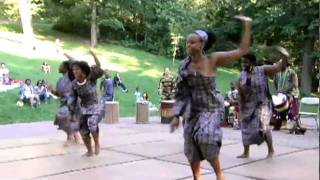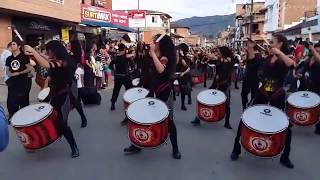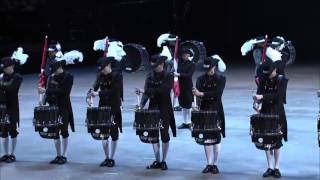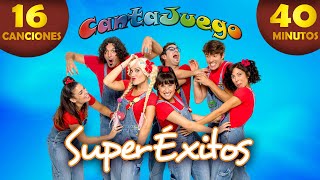On January 20, the Tamborrada is celebrated in San Sebastian
Recommended music videos for initiation to classical music
Raimundo Sarriegi (1813-1913) was a musician from San Sebastian who was born at the end of the first Carlist war into a family of farmers. He was a disciple of the teacher José Juan Santesteban , the “maixua,” and his favorite student. He composed abundant music for the Donostiarra Carnival, he also wrote other types of musical works such as the zarzuela “ Pasayan” or “Petra Chardiñ saltzallia ”; He also composed works for choir, such as “ Beti maite ” or “ Illunabarra ”, for txistu such as a “ Contrapás ”, a “ Minuet ”, or the well-known “ Alkate soñua ” that is performed today by the Municipal Band of Txistularis when it accompanies the Town Hall . donostiarra in corporation. Today it has a square and a monument in its honor in the Old Town of San Sebastian.
The Tamborrada de San Sebastián is the drum festival with which Donostia celebrates its patron San Sebastián from midnight on January 20. In the year 1597, a plague epidemic occurred in Pasajes , then a neighborhood of San Sebastián ; The neighbors went to the Church of San Sebastián to address their prayers, after which the epidemic disappeared; Therefore, the neighbors took him as Patron of the city , promising to celebrate his date.
The Tamborrada was at first a prelude to Carnivals , since already in 1835 a carnival troupe, in which everyone dressed up as they pleased, left around five in the morning on the 20th as a reveille; It is for this troupe that Sarriegi composed his drumwork works that he would expand for other Carnival troupes. In 1881 the City Council gave away some Napoleonic drums and uniforms that were kept in the San Telmo Barracks ; Five years later, the barrels would be added, symbolizing the city's neighbors. The number of companies increased little by little until reaching 16 in 1976 and 143 in 2018. In addition, in 1927 the Children's Drum paraded for the first time, which currently brings together more than 5,000 children.
Today, the festival begins at 0:00 a.m. on January 20 in the Plaza de la Constitución with the raising of the city's flag and the interpretation of the San Sebastián March to end at 12:00 p.m. In this video we offer the San Sebastián March by maestro Sarriegi in the version of the Orfeón Donostiarra accompanied by the Euskadi Symphony , under the direction of the Burgos maestro Víctor Pablo Pérez .
Johann Sebastian Bach (1685-1750) was a German violinist, organist, conductor and composer; He was born in Eisenach into the most prominent musical family in history with more than 30 famous composers within it. In 1703 he obtained his first job as a court musician for the Prince of Arndstat and in 1707 he moved to Mülhausen as an organist, where he married his cousin Maria Barbara with whom he had seven children. After the death of his wife in 1720, he remarried after a year and a half to María Magdalena with whom he would have another thirteen children. In 1723 he moved to Leipzig where he would reside until his death at the age of 65. A prolific composer, he is considered one of the main three geniuses in the History of Music along with Mozart and Beethoven.
The Christmas Oratorio is an oratorio divided into six cantatas to be performed on different days of the Christmas holidays: 1.- The Birth (December 25). 2.- The announcement to the shepherds (December 26). 3.- The adoration of the shepherds (on December 27). 4.- The circumcision and baptism of Jesus (January 1). 5.- The journey of the Three Wise Men (the first Sunday in January). 6.- The adoration of the Three Wise Men (January 6). Despite which, it is usually presented as a single whole or as two units: cantatas 1, 2 and 3 on the one hand and cantatas 4, 5 and 6, on the other.
The Aria Bereite dich, Zion, mit zärtlichen Trieben belongs to the first cantata, The Birth , which says: Prepare yourself, Zion, with tender affections, to see the Most Beautiful, the Most Beloved, soon at your side. Your cheeks should look much more beautiful today. Hurry to love your fiancé ardently .
Today it is offered to us by mezzo-soprano Bernarda Frik.
Edvard Grieg (1843-1907) was a Norwegian composer and pianist, considered one of the main representatives of musical romanticism. His mother, Gesine , was his first piano teacher; Later, she met the legendary Norwegian violinist Ole Bull , a family friend and her mother's brother-in-law. Grieg adapted many themes and songs from his country's folklore, thus contributing to creating a Norwegian national identity, just as Jean Sibelius did in Finland or Antonín Dvořák in Bohemia . His most important works are: the Piano Concerto in A minor , the intimate Lyrical Pieces (for piano), the Holberg Suite for string orchestra and, especially, Peer Gynt, incidental music that he wrote at the request of the writer Henrik Ibsen for his drama namesake.
The Holberg Suite , Op. 40, whose original title is " Holberg's Period Suite " is a suite based on baroque dance forms, composed by Edvard Grieg in 1884 to celebrate the second centenary of the birth of the writer Ludvig Holberg . It was originally composed for piano, but a year later it was adapted for string orchestra in five movements.
Today we offer a selection of the suite arranged for brass ensemble in performance by tenThing Brass Ensemble .
Aram Khachaturian (1903-1978) was an Armenian composer under the Soviet regime. At the age of 22 he began to write his first works for piano and chamber music; later orchestral music, theater and film music (more than 40 works between both genres), as well as ballet music in which the Spartacus ballet and the Gayane ballet are notable, to which the well-known saber dance belongs. He had important disagreements with the Party , being denounced for his “ anti-people music ”, although after Stalin 's death in 1953, he was widely recognized. His music is clear, agile and vibrant, and Armenian popular music, to which he has always felt attracted, can be felt in his works. In Armenia he is considered its main composer.
Lezginka is a number from the Gayane ballet featuring drums (a nod to the drumbeat) perked by Naoki Ishikawa (1975) who is a Japanese percussionist who moved with his family to the USA for his father's work reasons; His contact with drums began when he was part, as a percussionist, of a Marching Band in high school . From there his progress was notable until he became the current solo percussionist. After thirteen years in the USA , he returned to his native Japan where he currently resides.
Recommended classical music videos
Darius Milhaud (1892–1974) was a French composer characterized by the use of polytonality and rhythmic patterns derived from jazz. In 1916 he traveled to Brazil as secretary of Paul Claudel , then ambassador; There he wrote the Saudades do Brasil , Scaramouche , Le Bœuf sur le toit and the choreographic poem L'Homme et son desir . In 1918 he returned to France , became friends with Erik Satie and became part of the Group of Six . In 1940 he fled the occupation of France by the Nazis and moved to the USA , where he remained until 1947 to work as an honorary professor of composition at the Paris Conservatory . He wrote more than 400 works of all types of musical genres from chamber music to choral works, symphonies, operas or incidental music.
Concerto for percussion and small orchestra is one of the first concertos written for a percussion soloist, and is one of the most performed pieces in the repertoire; It was written in Paris for percussion and a small orchestra. Being written in the 1920s, this piece saw the light at the height of jazz music; However, Milhaud intended not to include jazz ideologies in his music; In this work he counteracted the jazz style by composing it in a polytonal form. The percussion ideas used in this piece are not composed with a solo approach; but the entire percussion section is played by a single person.
The work consists of two movements: I (0´21´´) VIF, RUDE ET DRAMATIQUE Hard and dramatic movement based on polytonal harmonies. II (3´09´´) MODÉRÉ. Lyrical movement, contrasting with the previous one and featuring small solos of different instruments interrupted in the final section by reduced memories of the initial theme. (Excerpts from article by Elizabeth Kosko, 2010)
As soloist today we are joined by master percussionist Laura Trompetter .
Béla Bartók (1881-1945) Hungarian pianist and composer who extensively researched the folklore of his country; He was one of the founders of ethnomusicology . At the age of five he began his musical studies with his mother, a piano teacher; At eleven, he gave his first concert with a work by Beethoven and another of his own composed two years earlier. Soon, the family moved to Pozsony where he met Ernő Dohnányi . Together they moved to Budapest where he studied composition in addition to continuing his piano studies; He met Zoltán Kodály with whom he made an in-depth study of Hungarian folklore (he managed to collect thousands of songs from the mouths of peasants), which he applied to his own compositions. He wrote music for piano, chamber music, two cantatas, a Concerto for Orchestra, two rhapsodies for violin and orchestra, two concertos for violin and one for viola, three piano concertos, one opera and two ballets.
Today we offer the Concerto for two pianos, percussion and orchestra conducted by Vladimir Jurowski (1972), Russian conductor, son of conductor Michail Jurowski and brother of director Dimitri Jurowski . Today's director, Vladimir , began his studies in Moscow until, in 1990, his father had to move to Germany with the entire family for professional reasons; In Dresden and Berlin he completed his studies in composition and conducting. In 1997 he joined the Berlin Comic Opera as assistant conductor and the following year as principal conductor. In 2007 he was appointed principal conductor of the London Philharmonic . He is currently the head of the Berlin Radio Symphony .
Niccolo Paganini (1782-1840) Italian composer, a leading figure in violin virtuosity. A prodigy child, his father forced him from an early age to spend long hours studying the violin; so that by the time he was fourteen his teachers declared themselves incompetent to continue teaching him. As a violin soloist he made various tours of Italy, Vienna, Prague, Warsaw, Berlin, Paris and London ; admired for his amazing technique, he obtained declared recognitions from Liszt and Berlioz , among others; His technique caused admiration to such an extent that it was said of him that he had made a pact with the devil. He wrote numerous works for violin and also for guitar, viola and bassoon. He died of tuberculosis at the age of 58.
Francisco Tárrega (1852-1909). He was a virtuoso guitarist and composer (“the Sarasate of the guitar”), born in Villarreal (province of Castellón ), whose childhood was marked by an accident when he fell into a ditch due to the carelessness of the girl who was taking care of him, and his sight was damaged. His father, fearing that he would be blind, moved to Castellón so that he could attend music classes and earn a living as a musician. Later, in 1874, he entered the Madrid Conservatory , where he studied composition with Emilio Arrieta . By the age of eighteen he was already teaching guitar lessons and regularly giving concerts. From 1880 he began his international tours, visiting cities such as Paris, Lyon and London , while his recitals throughout the state were countless.
The Carnival of Venice is a work with variations for violin and orchestra written by Paganini inspired by the Italian song O Mamma, Mamma Cara. Inspired by the work of Paganini , Tárrega writes for guitar the work we present today, Variations on the Carnival of Venice by Paganini. The interpretation is provided by the Japanese guitarist Kaori Muraji .
Luigi Denza (1846 - 1922) was an Italian singing teacher and composer, who achieved great fame for his Neapolitan songs Funiculì funiculà, Luna fedel and Occhi di fata , among others. He studied at the Conservatory of San Pietro a Maiella in Naples , where he had Paolo Serrao and Saverio Mercadante as teachers. In 1876 he premiered his opera Wallenstein in Naples . He was a singing teacher at the Neapolitan conservatory. In 1880 he settled in London (the same year as another Italian songwriter, Paolo Tosti ), where he was co-director of the Royal Academy of Music until 1898 and professor of singing at this institution until 1922, the date of his death.
Yo Goto (1958) studied at Yamagata University Japan and completed his composition studies at Tokyo College of Music . He has composed and arranged numerous school and pedagogical works; His compositions are known in Japan, the USA and Europe . He is a highly sought-after and well-known teacher for workshops and festivals of international, scientific and musical direction federations in the field of wind music . His compositions have been nominated on several occasions as mandatory work in national Music Band competitions.
Today we offer the arrangement made by Yo Goto on the popular Denza song Funiculi-Funicula . The version is offered to us by the Singapore Philharmonic Youth Winds conducted by maestro Adrian Chiang
Donostia drums
Drums of the world
Recommended music videos for children
Various Wikipedia articles have been used to write these texts.
The texts of Videomusicalis are written in Basque, Spanish and English.





